If South Korea’s big boom in dating and relationship reality TV shows is anything to go by, the country’s interest in romance has never been greater.
At least 20 such shows aired across the country’s cable TV networks and video streaming platforms last year, more than triple the number in 2021, according to a Reuters tally.
There’s a plethora of shows matchmaking young single people, but also, notably, a growing number highlighting South Korea’s increasing acceptance of non-traditional relationships that don’t revolve around marriage and starting a family.
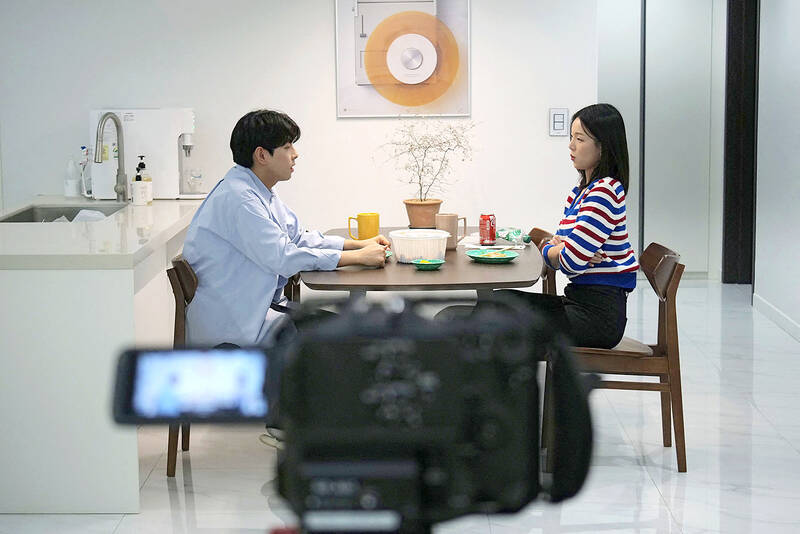
Photo: Reuters
Living Together without Marriage, for example, focuses on couples who have chosen not to tie the knot and His Man is one of two shows featuring LGBTQ people. Other shows throw the spotlight on divorced people searching for love again.
The trials and tribulations of dating and relationships — perennial fodder for TV content in most cultures — take on particular weight in South Korea. Here, the popularity of marriage as well as enthusiasm towards parenthood have nosedived. Sharp gender inequality and the sky-high costs of rearing children are widely blamed.
Kim Jin, chief producer of Living Together without Marriage, says the show, which premiered in January, does not intend to advocate unmarried cohabitation or discourage marriage, but spark debate.
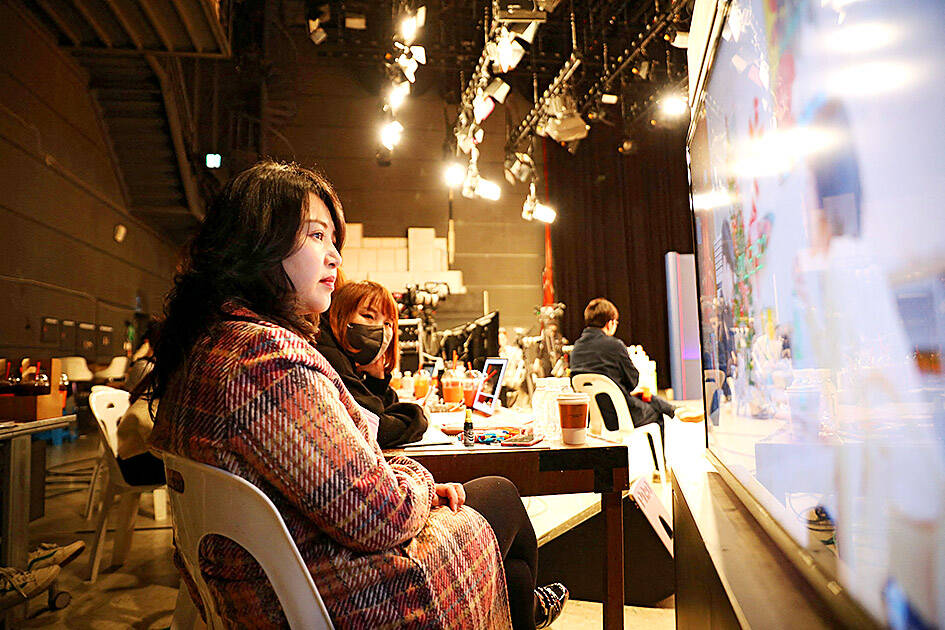
Photo: Reuters
“By showcasing these couples’ lifestyles and the reasons behind their decision, we wanted to bring the topic to the fore of society,” she said.
While official statistics on their numbers are not kept, unmarried couples living together no longer raise eyebrows in South Korea. That said, having kids outside of marriage is a step few Koreans would contemplate.
Whether to marry or not has been a source of tension for Cho Sung-ho and Lee Sang-mi, a couple of more than 10 years featured on the show.
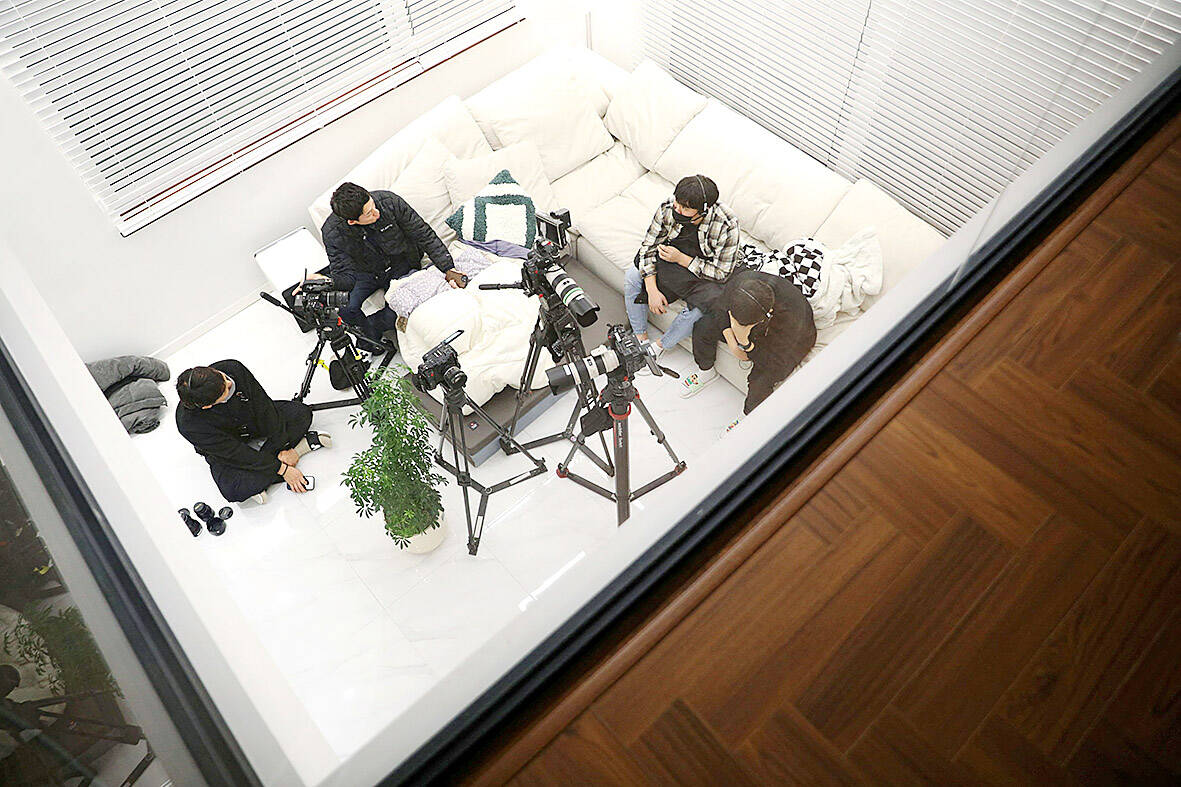
Photo: Reuters
For 32-year-old Lee, a model, the decision to live together unmarried was a deliberate choice not to be bound by tradition. She’s not eager to have children, saying it would be “impossible in reality” to be a good mother and stay true to herself.
“I am most comfortable with how it is now, and don’t quite get why I should get married and have more obligations such as visiting both sets of parents in the holiday season,” Lee said.
Cho, also 32, still hopes for marriage and children, although the former K-pop idol turned YouTuber says he understands Lee’s reluctance given that women usually bear the greater burden in child-rearing.
IMPORTANT CONVERSATIONS
South Korean disaffection with marriage and having children is underscored by grim statistics: the number of newly married couples has slid 23 percent in the past five years and the country has the dubious distinction of having the world’s lowest fertility rate.
And while romance reality shows may be all the rage, a substantial number of Koreans also appear prepared to eschew relationships altogether.
According to a survey of around 1,000 people last year by the Korea Population, Health and Welfare Association, about two-thirds of single people aged between 19 and 34 were not in a relationship. Of those, 61 percent of women and 48 percent of men said they had no desire to find a boyfriend or girlfriend in the future.
Shows like Living Together without Marriage illustrate how South Korea is embracing diversity in relationships in a way that is closer to Western societies, but the shows are also still very distinct from their Western counterparts.
Most have little in the way of conflict and tantrums. Although flirting, hugging and cuddling are depicted, kissing and sex are not. Even on dating shows like Netflix’s hit “Single’s Inferno” which transports young people to a deserted island, most of the shows’ content revolves around long conversations between participants.
The conversations in and around dating and relationship shows are good for South Korea, says Lim Myung-ho, a professor of psychology at Dankook University.
“The government and society really need to make efforts to foster a more positive attitude towards dating and marriage and these reality programs can help with that,” he said.

Sept. 1 to Sept. 7 In 1899, Kozaburo Hirai became the first documented Japanese to wed a Taiwanese under colonial rule. The soldier was partly motivated by the government’s policy of assimilating the Taiwanese population through intermarriage. While his friends and family disapproved and even mocked him, the marriage endured. By 1930, when his story appeared in Tales of Virtuous Deeds in Taiwan, Hirai had settled in his wife’s rural Changhua hometown, farming the land and integrating into local society. Similarly, Aiko Fujii, who married into the prominent Wufeng Lin Family (霧峰林家) in 1927, quickly learned Hoklo (commonly known as Taiwanese) and
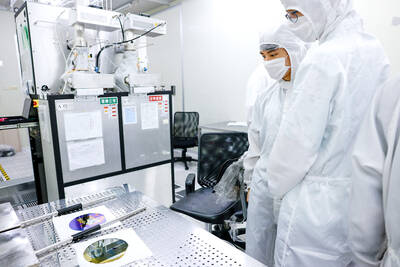
The low voter turnout for the referendum on Aug. 23 shows that many Taiwanese are apathetic about nuclear energy, but there are long-term energy stakes involved that the public needs to grasp Taiwan faces an energy trilemma: soaring AI-driven demand, pressure to cut carbon and reliance on fragile fuel imports. But the nuclear referendum on Aug. 23 showed how little this registered with voters, many of whom neither see the long game nor grasp the stakes. Volunteer referendum worker Vivian Chen (陳薇安) put it bluntly: “I’ve seen many people asking what they’re voting for when they arrive to vote. They cast their vote without even doing any research.” Imagine Taiwanese voters invited to a poker table. The bet looked simple — yes or no — yet most never showed. More than two-thirds of those

In the run-up to the referendum on re-opening Pingtung County’s Ma-anshan Nuclear Power Plant last month, the media inundated us with explainers. A favorite factoid of the international media, endlessly recycled, was that Taiwan has no energy reserves for a blockade, thus necessitating re-opening the nuclear plants. As presented by the Chinese-language CommonWealth Magazine, it runs: “According to the US Department of Commerce International Trade Administration, 97.73 percent of Taiwan’s energy is imported, and estimates are that Taiwan has only 11 days of reserves available in the event of a blockade.” This factoid is not an outright lie — that
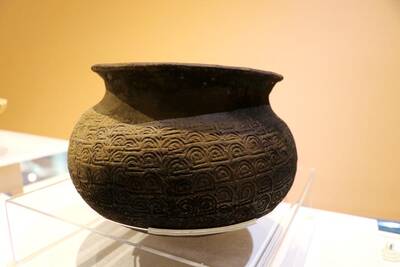
The People’s Republic of China (PRC) yesterday paraded its military hardware in an effort to impress its own population, intimidate its enemies and rewrite history. As always, this was paced by a blizzard of articles and commentaries in the media, a reminder that Beijing’s lies must be accompanied by a bodyguard of lies. A typical example is this piece by Zheng Wang (汪錚) of Seton Hall in the Diplomat. “In Taiwan, 2025 also marks 80 years since the island’s return to China at the end of the war — a historical milestone largely omitted in official commemorations.” The reason for its